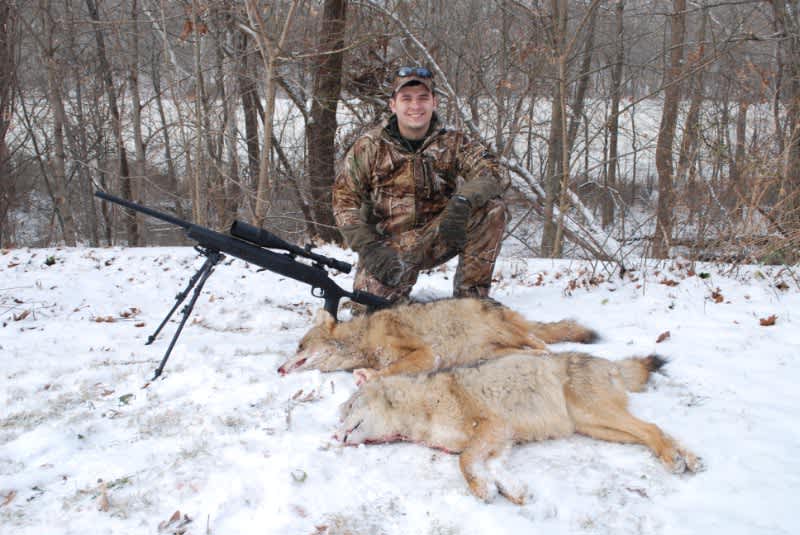Coyote Class 101
Lisa Metheny 09.20.11

Did you know predator hunting is increasing almost as fast as the coyote population is in suburbia? It’s true. A growing number of hunters have discovered the thrill of victory and defeat as they try and outwit the wiley coyote.
There are several reasons why predator hunting is on the rise, such as the increase in the coyote, bobcat and fox population, plus the increased availability of gear made specifically for predator hunting. Gear such as Nikon’s Coyote Special scope, which gives hunters the optics power necessary to make the longer, faster moving shots or the improvements made in world of electronic predator calls. But the number one thing which could be credited for increasing the number of predator hunters is the poor economy and cost of traveling. Because of this reason more hunters are looking for affordable, closer to home hunting options.
Coyotes tend to be the main focus of predator hunters because they are typically found in every state and province. Because they are formidable, cunning and extremely good at humiliating a hunter, coyotes offer a challenge all their own. For many hunters the constant chess game with a song dog is much of the lure. According to Steve Criner, the 2010 World Predator Calling Champion and Pro Staff for Hunters Specialties, “one of the biggest mistakes a new hunter will make when it comes to hunting predators is not treating them like the dynamic animal that they are. If a coyote can hear a mouse squeaking a quarter mile away and pin point within ten feet where it is hiding than they can hear a hunter.”

The key to a successful predator hunt is scouting the area prior to a hunt. Ask farmers and even the trash man if they have seen coyotes in the area and what time of day they have noticed them. “Coyotes are the smartest animal I hunt and if you don’t scout them or treat them like a game animal such as a whitetail you are not going to be consistent in hunting them,” adds Criner. Although coyotes typically are most active at dawn or dusk they can be active at anytime of the day or night, especially if food is scarce or weather is a factor. Trail cameras can also be a valuable tool for predator hunting.
Coyotes are known for their wide array of vocal sounds such as squeals, growling, huffing and barks. It may take some time to achieve the skill level of Criner but don’t give up. Understanding the language predators speak and what each sound means is a skill that takes time to develop and the best teacher is still Mother Nature.
There basically two types of predator calls; hand calls, sometimes referred to as mouth calls, and electronic calls. “I use both types of calls because it is essential. I will go through an area with a hand call and call it out and then I might even go back the next day and switch up the sound and use an electronic game call,” mentions Criner.
Not only do predators have a keen sense of smell and super sonic hearing, their eyesight is equally as impressive – making these animals a challenge to hunt. If you’re new to predator hunting here are three things to consider before getting started.
- Be patient and wait it out if possible, many predator hunters leave the set-up too early.
- Move slowly, whether you are hunting in the daytime or nighttime, move slowly to and from your set-up, too much movement will kill a hunt.
- Pay close attention to the wind and open areas down wind. Predators are extremely intelligent and they will try and come in from the down wind side.
Leg work, smart scouting, and hard hunting are the winning combination if you plan on hunting predators and it can produce memorable results. For those hunters who have discovered the thrill of calling a coyote across a frozen prairie or fooling a bobcat to come within reach, this type of hunting easily provides hours of thrilling budget- busting hunting opportunities.

